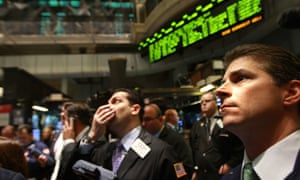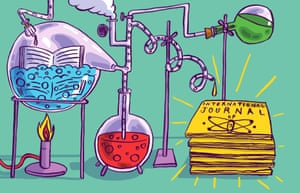Kannan Kasturi in The Economic and Political Weekly
The decision to privatise Air India comes at a time when the government’s “reform” credentials are being questioned by big business. All information publicly available points to a continuing improvement in the performance of the airlines. Between 2011–12 and 2015–16, the last year for which official financial results are available, the airline showed a steady improvement in terms of its operational profit/loss as well as its passenger load factor. The corporate business press is lauding the government’s privatisation decision, hailing it as the resumption of “reforms” which has come to mean more disinvestment and privatisation. It is hard to understand how mismanaging public assets and then selling them is “reform.”
The government appears to be on the fast track to privatise Air India (AI), the country’s flag carrier airline with the union cabinet giving its approval soon after a recommendation from the Niti Aayog. The chief executive officer (CEO) of the NITI Aayog revealed that it took only 15 days to come up with the report recommending total privatisation of the carrier. The Aayog did not see any need to consult the stakeholders of AI—employees, management or even the Ministry of Civil Aviation (MCA).
The last time a plan for privatisation of India’s public sector airlines had been mooted—only to be quickly abandoned—was during the tenure of the National Democratic Alliance (NDA) government of 2000–04 (PAC 2014: 154). The years following this were extremely traumatic ones for both the Indian Airlines and AI and after their merger in 2007, also for the merged entity, with a rapid deterioration of its finances.
In April 2012, the government signed a 10-year restructuring plan with the AI. Since then, as required by the plan, it has been continuously monitoring the performance of the airline. Repeated statements by the MCA in Parliament over the years, the last as recently as on 9 March, have testified that the government is largely satisfied that the AI is progressing as per the turnaround plan (MCA 2017a). Against this backdrop, the Minister of Finance Arun Jaitley’s highlighting of AI’s debt and market share as reasons to proceed with its privatisation, is to say the least, curious.
So what caused AI’s finances to deteriorate rapidly till 2012?
The Making of a Crisis
AI and Indian Airlines had been running profitably till 2005–06. However, their future had already been compromised by then.
During the period 1998–2004, no new planes were ordered for AI or Indian Airlines. This was at a time when competition was increasing from private airlines which were rapidly expanding their fleet. The NDA government was keen on privatising Indian Airlines and did not take decisions on the proposals for fleet expansion by Indian Airlines and AI (PAC 2014: 141, 154).
Fleet expansion proposals were finally approved by the government (now of the United Progressive Alliance—UPA) in 2005–06. The orders for new aircraft would have been large ones considering that they came after a long interval. However, even here, the government interfered with the erstwhile AI to its detriment. An AI (pre-merger) board approved proposal for 28 aircraft in January 2004 which was revised to 68 aircraft by November 2004! The total estimated cost of the aircraft on order by the two airlines was over ₹41,000 crore and the only equity infusion planned was ₹325 crore for Indian Airlines. The acquisition was to be funded by debt to be repaid through revenue generation (CAG 2011: viii).
With the two airlines in a precarious situation, the government in its wisdom carried out their merger in 2007 at one stroke. The unions representing airline workers and staff were not consulted. From all accounts, it appears that it was an ill-thought-out act for it would have been difficult to find synergy in the two organisations. The two airlines flew different types of planes and hence the skills of pilots and engineers were different. They had different ticketing systems, and a different organisational culture. The merger imposed huge immediate financial costs and severely affected the morale of the employees.
Between 2007–08 and 2012, AI chalked up increasing losses each year. This along with loans taken to pay for the 111 planes on order added up to a huge debt. By April 2012, when the government finally signed on a turnaround plan for AI, the annual operational loss of the airline had increased to around ₹5,000 crore and its accumulated debt had reached nearly ₹43,500 crore. It was then operating on a capital base of ₹3,345 crore (AI 2012).
Even while the AI was struggling with aircraft shortage, the government went ahead and increased bilateral entitlements (including interior points of call in India) with West Asian countries much beyond the dictates of mutual traffic. At that time, the AI was not even able to utilise its existing quota on what were its most profitable routes. The West Asian carriers used sixth freedom traffic rights (the right to fly from one foreign country to another foreign country after stopping in one’s own country) to transport people from India to Europe and the United States (US) via their West Asian hubs, eating into AI’s share of passenger traffic in/out of India to these countries (CAG 2011: xii). The lack of planes to fly within India resulting from the delay in ordering new aircraft also had an effect on the AI’s passenger share within the country. The national carrier’s share of domestic passengers dropped from 23.1% in 2005–06 to 13% in 2011–12 (DGCA 2017).
Work in Progress
As part of the turnaround plan, the government agreed to restructure some of AI’s debt to reduce the interest burden and also infuse capital to cover the cost of new aircraft. This was however conditional on AI meeting specific performance targets every year. The infusion of capital, had it happened immediately, would have helped it in its turnaround initiatives. Instead, the government went for piecemeal recapitalisation on an uncertain schedule.
Subsidiaries were created for maintenance repair and overhaul (MRO) and ground handling services. An old criticism of AI was that it employed too many people and hence was inefficient. With the creation of the subsidiaries, the manpower employed per aircraft became comparable to other private airlines.
Between 2011–12 and 2015–16 (financial years), the last year for which official financial results are available, the airline showed a steady improvement in terms of its operational profit/loss as well as passenger load factor—the percentage of seats on offer that were filled. In 2015–16, the airline made a small operational profit, two years in advance of the turnaround milestone. Its low cost international airline subsidiary, Air India Express and its ground and cargo handling services company, AISATS also made profits (Table 1).

AI’s financial results for 2016–17 are not officially available but indications are that there will be a significant improvement over the previous financial year in EBITDA (Earnings Before Interest, Tax, Depreciation, and Amortization) (Ghosh and Ghosh 2017). In answers to questions raised in the Lok Sabha, the MCA stated that AI was expected to improve its revenues in 2016–17 by 10%, revenue passenger km (RPKM) by 6.8% and passenger load factor by 6.2% (MCA 2017b). The provisional estimate for 2016–17 (financial year) was an operational profit of ₹1,086 crore and a net loss of 1,989 crore (MCA 2016a). Though AI continues to make a net loss because of interest outgo on debt which in 2015–16 was about ₹4,000 crore, the secretary, civil aviation, went on record in October 2016 to state that he expected a net profit by 2018–19, ahead of the turnaround plan which projects net profits only by 2021–22 (Mishra 2016). All information available publicly points to a continuing improvement in performance.
However, for AI to remain competitive in the longer term, steps need to be taken about its huge debt that has been a drag on the airline. Leaving aside low interest aircraft loans, the outstanding debt is around ₹30,000 crore, 90% of it is from public sector banks and financial institutions (MCA 2016b). The airline has prime real estate assets which it has found difficult to sell because of bureaucratic delays. If the government were to provide assistance in restructuring the debt, selling AI’s real estate assets and speed up infusion of the remaining capital of about ₹6,000 crore promised as part of the turnaround plan, the airline should be on a good wicket.
Chequered History
The basic credo of supporters of privatisation is that the state should withdraw from the provision of all services (and production of all goods) which private corporations are able and interested in providing (producing). The only exception to this would be a “market failure” which render private players incapable of providing (or unwilling to provide) these services. The argument in support of such a belief is that state-controlled enterprises cannot function as efficiently as private corporations.
How does this argument stand up against the actual performance of India’s airlines over the last two decades?
Several early players such as Damania, Modiluft, Natural Energy Processing Company (NEPC) and EastWest folded up, some under a cloud. Air Deccan, the second largest airline in India in 2007, ran into losses and was ultimately taken over by Kingfisher Airlines. Kingfisher became defunct after borrowing ₹7,000 crore from public sector banks. Sahara was taken over by Jet Airways. Spicejet went close to bankruptcy in 2014–15 stopping operations and stranding passengers without notice and has come back only after a large equity infusion from a promoter.
In 2003–04, before the emergence of competition from low cost carriers, Jet Airways accounted for 44% and the public sector airlines together 43% of domestic passenger shares (DGCA 2017). An IMRB survey in October 2004 rated the Indian Airlines as the “most preferred airline”, above Jet (Sen 2009). The low cost carriers had a huge effect on the full service carriers of that period—IA (AI), Jet and Kingfisher. Kingfisher became bankrupt in 2012. Jet was able to survive only after equity infusion by Etihad of Abu Dhabi in 2013. The government appears to have played a role in the rescue by increasing the bilateral entitlements of Abu Dhabi (the number of passenger seats each way between India and Abu Dhabi), which coincided with the Jet–Etihad deal (Phadnis 2013). In 2017 till May end, Jet’s share of domestic passengers was 15.4% and AI’s was 13.3%, the rest being taken by low cost carriers (DGCA 2017). Jet and Indian Airlines (now Air India) have had a similar fall in share of passenger traffic within India after the entry of low cost carriers.
The finance minister has used the low passenger share to deride AI publicly to create public opinion in favour of its privatisation. The fact is that in 2015–16 compared to 2012–13, AI has flown 29% more passengers within India and increased its passenger load to 78.9% from 68.3%. During this period, the AI’s “available seat kilometres” increased only by 6% (DGCA 2017). What this points to is that its passenger share has been limited by the number of aircraft it has available to fly. As the MCA itself revealed in Parliament, there has been no capacity induction into the AI while private airlines have added substantial capacity. Between 2013–14 and 2015–16, AI’s capacity share in the domestic market came down from 17% to 15% (MCA 2016c). Its market share has come down because of decreasing capacity share. The government must own its share of responsibility for this situation.
If the measure of “efficiency” of an airline includes efficient use of capital and labour and providing services without disruption, then looking at the two decades of turmoil in the airline industry, it is hard to accept that private airlines in general have been necessarily managed efficiently.
Unsustainable Debt
Extending the discussion of efficiency to India’s private corporate sector as a whole, it is useful to delve into what has been termed the “twin balance sheet problem.”
Over the years, India’s private corporations have borrowed heavily from banks to grow their businesses. Some of these businesses have failed and others are not generating enough revenue to service their debt. The banks who have lent them money have lost interest income and are in danger of having to write off their debts. It is estimated that three-fourths of all corporate lending could be from public sector banks (Chakravarty 2016).Public sector banks bear the brunt of the bad loan problem.
The government has stonewalled attempts to get the banks to name the bad debtors among private corporations. However, piecing together information from different sources, one finds that more or less all of India’s large industrial houses are involved.
A 2012 Credit Suisse report featured 10 large manufacturing houses—Lanco, Jaypee, GMR, Videocon, GVK, Essar, Adani, Reliance (Anil Ambani), JSW and Vedanta—with high levels of debt that they would find hard to service. A follow-up by Credit Suisse in 2015 found that the financial condition of these groups had deteriorated despite their attempts to sell assets to pare debts. These groups accounted for 27% of all corporate loans from the banking system (Sanjay 2015). In August 2016, the government stated in Parliament that the top 10 corporate groups owed public sector banks and financial institutions ₹5.7 lakh crore (PTI 2016). The businesses of these groups span areas extending from military hardware to steel, coal, power, oil and gas, roads, airports, railways and ports.
In June 2017, the Reserve Bank of India (RBI) identified companies of three groups from the list—Lanco, Essar and Jaypee—and nine other companies which together owed ₹1.75 lakh crore to banks to be dealt with under the bankruptcy code. It is estimated that at least half the debt will have to be written off by the banks.
In the telecom sector, the debt of India’s top seven telecom companies—Bharti Airtel, Vodafone, Idea, Reliance Communications, Reliance Jio and Tata Teleservices—increased by 20% in 2016–17 to ₹3.6 lakh crore and all the companies (except for the new entrant Reliance Jio) have problems servicing their debt (Sarkar 2017). The State Bank of India has the largest exposure to the industry and its chairperson has pleaded with the government to help the industry by deferring spectrum payments, providing duty waivers and reducing the goods and services tax (GST) rate in order to prevent its loans from imminently becoming non-performing assets (NPAs) (TNN 2017). While the incumbent operators blame Reliance Jio for their debt servicing problems, the latter points out that these companies were working with insufficient equity, relying too much on debt financing (PTI 2017).
A recent example from the power sector involves three large corporate houses—Tata, Adani and Essar. All of them won competitive bids based on tariff and set up power plants in Gujarat using imported coal. Their contracts have no provisions to link tariff with coal prices and the companies are running at a loss after coal prices increased and are unable to service their debt. The government is reportedly putting together a rescue package where the companies will be brought under state ownership (Dutta 2017).
The above examples do not capture the enormity of the bad debt problem. During the period 2013–15, public sector banks wrote off ₹1.14 lakh crore of debt (Mathew and Narayan 2016). Several additional lakh crore will likely be written off in the coming years. Eventually, the banks will have to be “bailed out” by the government through capital infusion.
The unsustainable debt of so many private corporations across a swathe of sectors periodically requiring government rescue—including debt write-off by public sector creditors—hardly speaks well about the innate superior efficiency of the private sector.
Timing of Privatisation Decision
Why has the government announced the decision to privatise AI—a decision taken in great haste—just at a time when the airline is on the verge of becoming profitable?
The decision comes at a time when the government’s “reform” credentials are coming under question. These “reforms” which were eagerly anticipated by business leaders and foreign investors have got derailed and include making land acquisition easy, relaxing labour regulations for large factories and doing away with the obligations of banks to lend to the “priority sector” (farmers, small businesses, etc). The government’s inability to make a major dent in the “twin balance sheet problem” has severely affected new lending by banks to the private corporate sector. All this has affected the sentiment of business towards the government.
The announcement of the privatisation of the AI, considered a “soft target” by the government, is perhaps aimed at reversing this state of affairs. As a business newspaper editorialised,
(T)he privatization of Air India will boost investor sentiment in a big way as it demonstrates the government’s willingness and ability to take the reforms process forward. (Mint 2017)
Case against Privatisation
Private investors are interested in the AI because it is an operationally profitable airline with a large fleet of mainly new aircraft, a profitable low cost international carrier like Air India Express, a profitable ground handling services venture, valuable immovable assets in land, offices, hotels and hangers; skilled human resources in the form of a large number of pilots and engineers; the only MRO set-up in India, prime slots at airports in the country and around the world, membership of Star Alliance, etc. The AI is also the largest Indian carrier of passengers across the country’s borders.
The privatisation of AI is only possible if the government writes off a significant part of its debt. This debt accumulated for the large part until 2012 has acted as a millstone around the airline’s neck and delayed its return to profitability. There are various proposals being mooted to once again restructure AI to make its main business—that of flying passengers—attractive to potential buyers. Whatever restructuring is done, there is no getting away from the fact that its debt has to be written off.
The responsibility for this debt rests squarely with the government and is due to its many omissions and commissions in the past—delayed acquisition of aircraft, late capitalisation of the airline, interference in decisions related to aircraft acquisition, the ill-thought-out merger of the AI and Indian Airlines and not providing a level playing field to the national carrier on international routes.
If the government extends the same benefits to the public sector airline (that it wants to for a possible private owner by writing off part of its debt), it will be able to forge ahead. However, given that the airline is close to becoming profitable, it appears that even assistance with restructuring of its debt to public sector banks and sale of its properties will help it to reach profitability and manageable levels of debt.
Publicly owned airlines can also be run efficiently. Singapore Airlines is an example. An efficiently run public carrier can bring stability to air transport services and provide the right competition to private airlines. It can also fulfil objectives that are not dictated by the exigencies of maximising profit—like providing essential coverage to underserved areas or unscheduled services to the Indian diaspora during an emergency— as it does now.
The corporate business press is lauding the government’s privatisation decision, hailing it as the resumption of “reforms” which will consist of more disinvestment and privatisation. It is hard to understand how mismanaging public assets and then selling them is “reform.” Only those who see opportunities for profit in such sales can pretend that these are reforms.
The real reform that India needs is in the manner that public sector enterprises are managed. This reform must ensure at a minimum that there are well-defined policy guidelines for these enterprises available in the public domain, that the enterprises are compensated for costs incurred in implementing specific government policies not in line with their commercial objectives, that there is professional management in place and that this management is shielded from interference from politicians and bureaucrats.
The present government came with the claim of providing “good governance.” There is no reason why this should not extend to the management of public sector enterprises.




